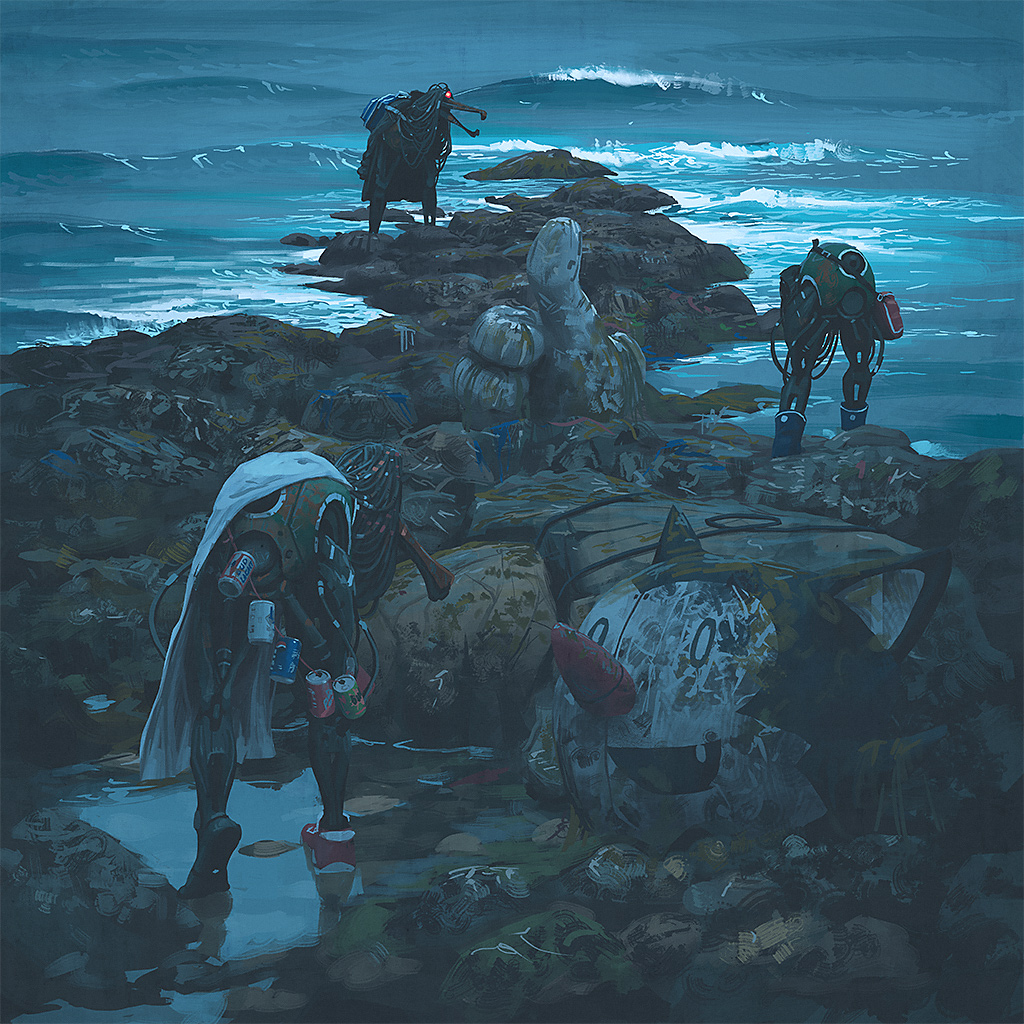BY NOAH FONTANESI
STAFF WRITER
Simon Stålenhag is a Swedish artist who is most known for his art books, such as The Electric State and Tales from the Loop. He often writes and draws about robots, specifically in a post-apocalyptic setting in Sweden and America.
The Electric State is about a teenager and her toy robot as they go to the West Coast through the desert as their hyper-consumerist society is on the decline in 1997 America. Tales from the Loop is set in Sweden during the 80s as a particle accelerator called the Loop is causing strange occurrences for the locals of the land with Things From the Flood showing the long-term consequences that the Loop has brought them. The Labyrinth is about two scientists and a boy who are assigned to study a world-ending phenomena, though their post-apocalyptic sci-fi world seems already dead as cosmic horrors plague them.
Stålenhag’s writing is about the people who live in the post-capitalism settings that he creates, but the art is all about the world. He paints in a realistic style that especially utilizes the lighting and environment to create a desolate atmosphere. The brush strokes are small enough that you have to zoom to see them, giving the images a photographic feel like they’re screenshots from a documentary. You can feel how there should be more people in the scenes, but the main subjects that resemble people are often big run down robot mascots that have been dumped in places like the desert. The structures and environments are the main draw with the amount of insight they provide like we can see how the world decayed.
Stålenhag very much uses his art to critique capitalism and consumerism, and how it will ultimately end us as a people. He shows a hollow landscape of the future to demonstrate to us how lifeless the world has become as the robots seemingly replace the people and animals that would be there. These robots were made to farm and scout, but they’re crawling and traversing the land like they’re the animals that are native to the land, as if they’re the dominant species now. People are tiny compared to them and are almost as insignificant as mice. They’re sparse in the illustrations, and there are no animals present in any of the illustrations, furthering the lifeless feel. The closest thing to animals are dinosaurs that come back to life in Tales from the Loop, and even then they’re one of the things that are caused by the Loop, making them another result of capitalism and corporate greed.
The mascots he often features are especially remnant of the message with the way he strips off the distracting brightness of mascots and shows the discarded and rotting. Mascots are the ultimate representation of the appeal of consumerism, as they’re made to sell you something, but once you take that away and there’s nothing left to consume, you’re left empty. They erode in the desert and are treated like litter in the streets, no less than any other junk.
Stålenhag doesn’t just draw the world ending, as seen in his solo art and commissions. He’s been commissioned to make cover art for games like No Man’s Land and Mutant, as well as promotional art for the game and movie adaptations of his work, and he’s worked for the Stockholm Resilience Center and the Swedish Museum of Natural History to draw dinosaurs and sci-fi scenes that are exactly his style while being a completely different tone than his art books. It really demonstrates his skill with color and tone as you very much feel like you are part of the scene. He can instill a sense of whimsy into you with his less dark art that leaves you in awe. He’s excellent at storytelling, coupled with his ability to set the atmosphere, pulling you into the image.
It makes reading his books a very immersive experience, and I would recommend getting them, even if you don’t care for reading and only want the art. A lot can be learned from it, and I think people interested in things like environment design, comics, illustration, and anyone who wants to do visual storytelling should take a look at his work. It’s a treat to see, and anyone who appreciates good sci-fi can find something interesting about his work.
Sources:
